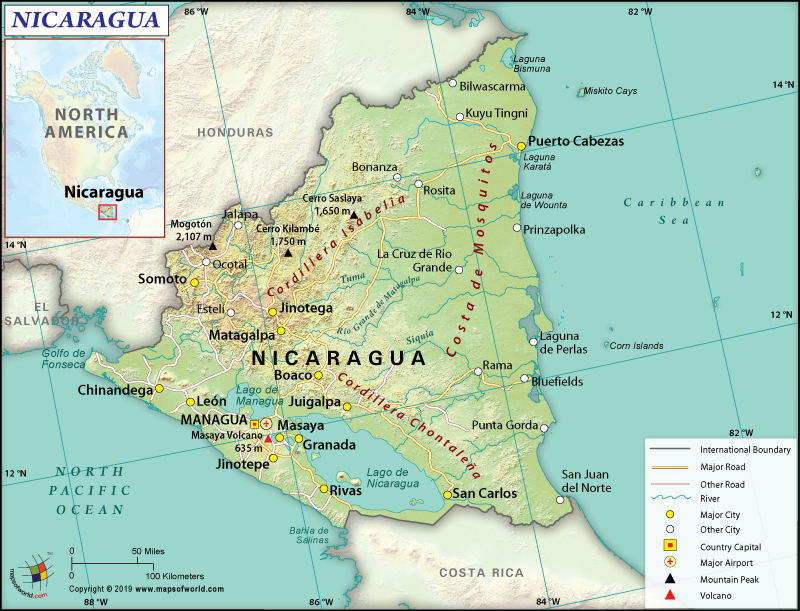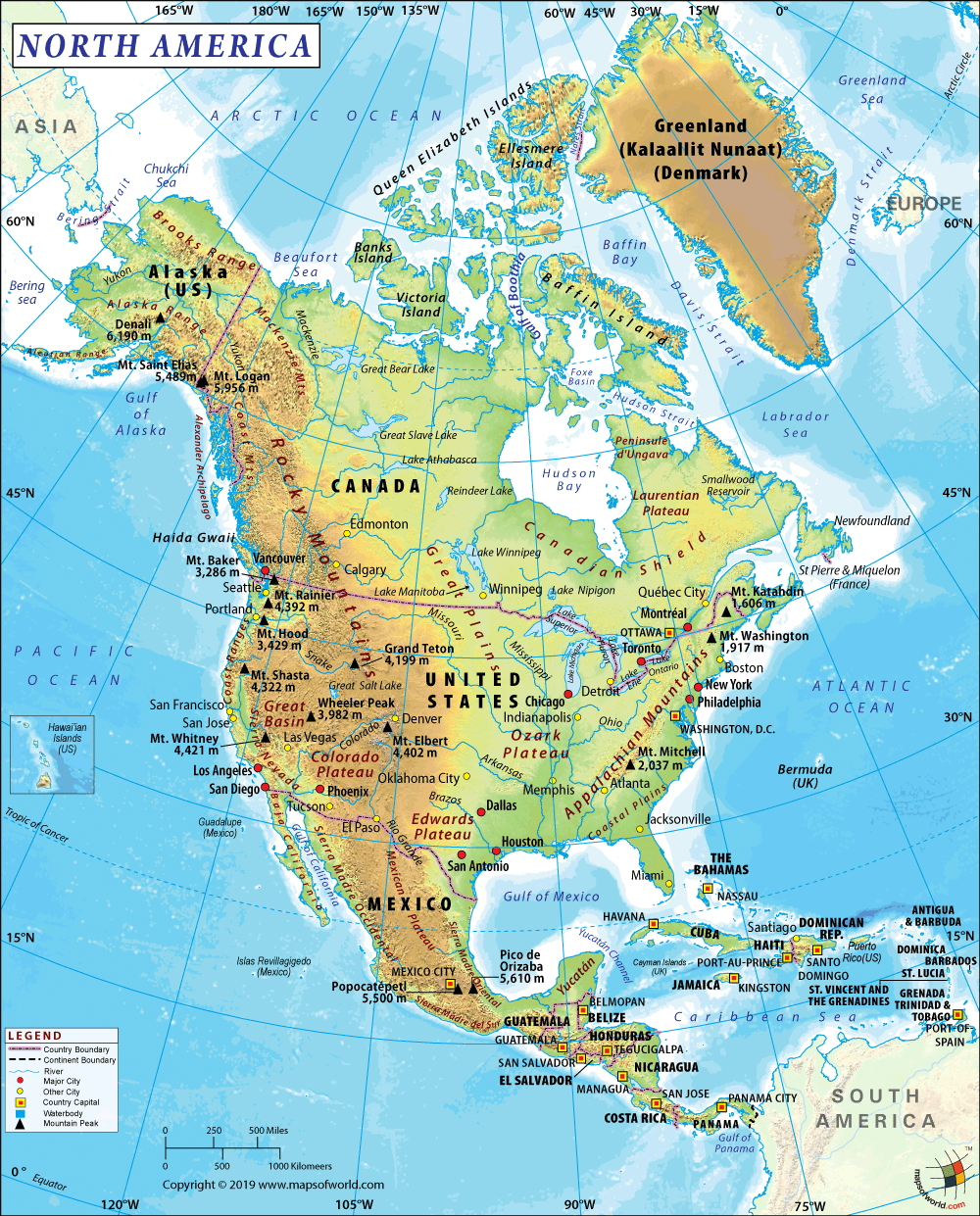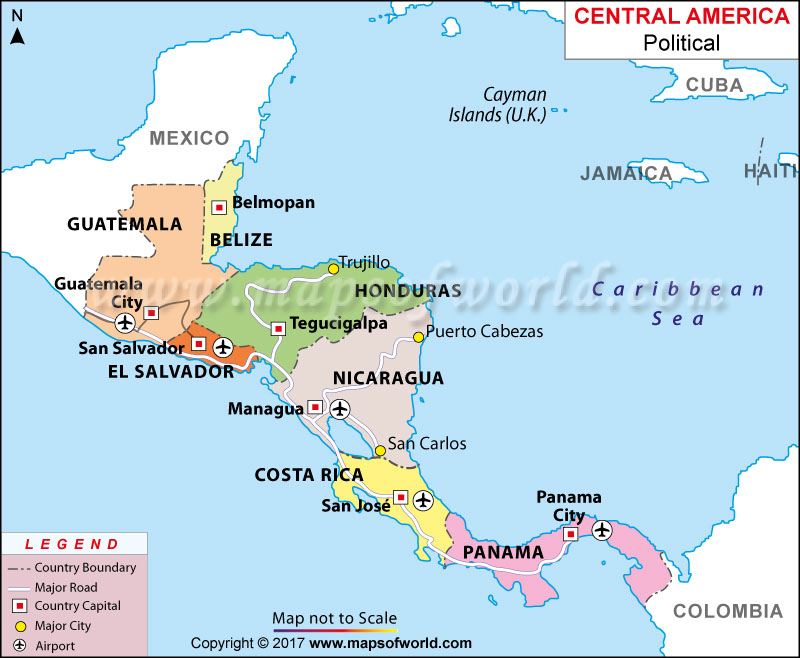What are the Key Facts of Nicaragua?

|
Official Name |
Republic of Nicaragua |
|
Continent |
North America |
|
Capital |
Managua |
|
Largest City |
Managua |
|
Coordinates |
13.000000, -85.000000 |
|
Area |
50,338 sq. mi (130,375 sq. km) |
|
Land Boundaries |
779 mi ( 1,253 km) |
|
Coastline |
565 mi ( 910 km) |
|
Currency |
Córdoba (NIO) |
|
Neighboring Countries |
Costa Rica, Honduras. Maritime neighbors: El Salvador, Colombia |
|
Population |
6,167,237 (2012 census) |
|
Official Languages |
Spanish |
|
Major Religion |
Christianity |
|
National Day |
15 September (Independence Day) |
|
National Anthem |
“Salve a ti, Nicaragua” |
|
Form of Government |
Unitary dominant-party presidential constitutional republic |
|
President |
Daniel Ortega |
|
Vice President |
Rosario Murillo |
|
GDP per capita (PPP) |
$ 5,523.8 (World Bank, 2018) |
|
GDP per capita (nominal) |
$ 2,028.9 (World Bank, 2018) |
|
HDI |
0.658 (2017), Rank: 124 |
|
Literacy Rate (%) |
82.61 (UNESCO, 2015) |
|
Space Agency |
NA |
|
Military Expenditure Ranking |
126 (SIPRI, 2017) |
|
No. of Olympic Medals |
0 (as of 2018) |
|
Driving Side |
right |
|
Calling Code |
+505 |
|
Time Zone |
UTC−6 (CST) |
|
Internet TLD |
.ni |
Where is Nicaragua?
Nicaragua is a Central American country, which is located between Costa Rica and Honduras. It borders both the North Pacific Ocean and the Caribbean Sea.
What is the Geography of Nicaragua?
Nicaragua has a total area of 130,375 sq. km (50,338 sq. mi), out of which 119,990 sq. km (46,328 sq. mi) is land area and 10,380 sq. km (4,008 sq. mi) is water area. It has a 1,253 km (779 mi) long land boundary, which is shared with two countries: Honduras (940 km or 584 mi) and Costa Rica (313 km or 194 mi). The Republic of Nicaragua has a 910 km (565 mi) long coastline.
The mean elevation of Nicaragua is 298 m (185 ft). While Mogoton at 2,085 m (1,296 ft) is the highest elevation point, the Pacific Ocean at 0 m (0 ft) is the lowest elevation point of the country. Besides Mogoton, the other highest mountains are Volcán San Cristóbal, Peñas Blancas, Volcán Concepción, Cerro El Diablo, etc.
Some of the major rivers of Nicaragua are Río Coco, Río San Juan, Río Amaka, Coco River, Wawa River, Río Grande de Matagalpa, San Juan River, Rio Brito, etc. Lake Nicaragua (also called Lake Cocibolca) is the largest lake in the country.
Nicaragua has 3 distinct landforms: the Nicaraguan lowlands, the highlands, and the Mosquito Coast. The highlands create the backbone of the country.
The lowlands in Nicaragua start from the Pacific coast, slants through the country to San Juan River’s valley, and up to the Caribbean Sea. There are over twenty volcanoes that border the lowland region’s northwest direction. Many of these volcanoes are still active. The soil here is extremely fertile, thanks to the volcanic ash. Numerous river valleys are there in this lowland. Nicaragua and Managua lakes are also situated in this region.
There are two mountain ranges that reach a maximum of 2,000 m (6,560 ft) and run down the center of Nicaragua. While the northern parts of the country house the higher mountains, the lower mountains are located mainly in the southern parts. The highlands are fertile and are covered by lush green forests. Almost all types of minerals are found in the country.
The Mosquito Coast is characterized by plains that are flat and wide. These plains are covered with tropical forests as well as multiple swamps. It is located along the Caribbean Sea. Lagoons, bays, and sandy beaches dot the coastline.
The climate in Nicaragua is tropical, which is characterized by hot weather across the year. The temperature remains stable. November-to-January is the winter season of the country. The weather gets relatively cooler during this time. March-to-May is the spring season when the weather remains pleasantly warm. The summer season starts in May and continues until October. The weather remains sultry and the season gets lots of rain.
The Nicaraguan climate on the west coast (facing the Pacific Ocean) differs from that of the eastern one (that overlooks the Caribbean Sea). While the west coast is hotter and remains significantly dry during December-to-April, the eastern coast gets lots of rain and remains more humid. As the eastern coast remains exposed to north-east trade winds, even in winter season this part of the country gets lots of rainfall (receives more than 4,000 mm or 160-inch rainfall per year). Nicaragua’s eastern coast has an equatorial climate.
There are 3 temperature zones in Nicaragua. The lowlands (including the Pacific and Atlantic coasts) get an average temperature within 22-30 °C (71.6-86 °F) during daytime and around 22° C (72 °F) during nighttime. In May, the temperature can rise up to an average of around 38 °C (100 °F). The temperature in the central and northern parts of the country remains cooler by around 5 °C (41 °F) and by around 10 °C (50 °F) respectively.
What is the Economy of Nicaragua?
Nicaragua is one of the poorest countries in Central America as well as the Western Hemisphere. It is predominantly an agriculture-based economy, plagued by unemployment and poverty. The economy expanded somewhat under the Daniel Ortega administration (who became President in 2007).
In 2009 due to the global recession, the economy contracted by -1.5%. The contraction took place mainly because of the low remittance growth, decreased demand for Nicaraguan exports in the Central American economies and the USA, and the lower commodity prices of major agricultural export items of Nicaragua.
Thanks to the growth in its tourism industry, the economy posted a 4.5% growth in its nominal GDP in 2010. The economy sustained 4.7% and 4.5% growth rates in 2016 and 2017 respectively. However, the nominal GDP came down to US$13.118 billion in 2018 from US$13.844 billion in 2017, a contraction of -3.8%. This contraction happened mainly because of the political unrest in the country since April 2018. Reports indicate that the economy will further contract by -5% in 2019.
World Bank reports show that the unemployment rate came down from 8.16% in 2009 to 4.21% in 2017. However, it increased to 4.48% in 2018. The Nicaraguan economy was successful in bringing down the poverty rate from 48.3% in 2005 to 29.6% and 24.9% in 2014 and 2016 respectively. Extreme poverty also dropped from 8.3% in 2014 to 6.9% in 2016.
The violent protests in mid-2018 adversely affected business confidence and thereby growth in investment and tourism. This led to increased job loss, followed by an economic and social downturn.
What is the Transportation System of Nicaragua?
Nicaragua has 23,897 km (14,849 mi) of roadways (out of which 3,346 km or 2079 mi is paved and 20,551 km or 12,770 mi is unpaved). There is 2,220 km of navigable waterways in the country, especially on the large Managua and Nicaragua lakes. The navigable rivers mainly help in local transportation. The main seaports are Bluefields and Corinto. The country has 5 merchant ships. There are 147 airports in Nicaragua, out of which 12 have paved runways and the rest 135 have unpaved runways.
What International Organizations is Nicaragua part of?
WTO, UN, IMF, WHO, ILO, UNESCO, Union Latina, Interpol, BCIE, CACM, CD, CELAC, FAO, G-77, IADB, IAEA, IBRD, ICAO, ICRM, IDA, IFAD, IFC, IFRCS, IMO, IOC, IOM, IPU, ITSO, ITU, LAES, MIGA, NAM, OAS, OPANAL, OPCW, PCA, Petrocaribe, SICA, UNCTAD, UNHCR, UNIDO, UNWTO, UPU, WCO, WIPO, WMO, ITUC (NGOs), ISO (correspondent), LAIA (observer)
Related Link:



